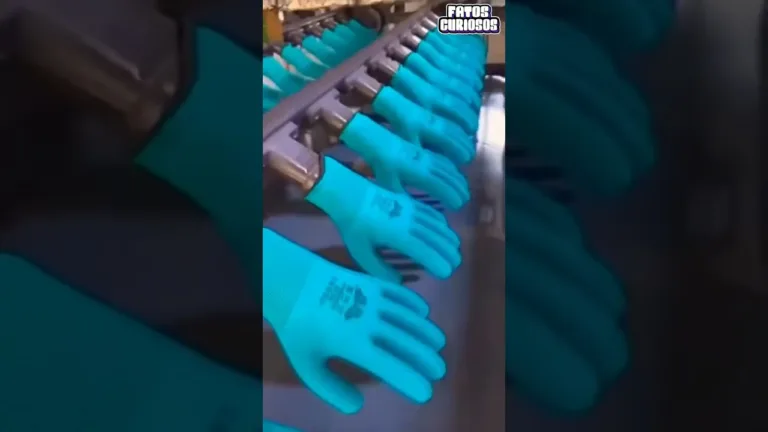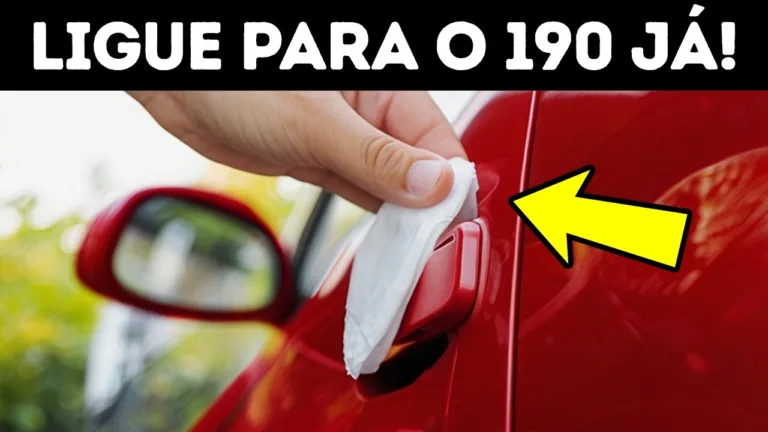Nossa MINI CASA tem ESGOTO e ÁGUA CORRENTE!
You asked so much, but so much, so much that we had no choice… let's finish building this little house here! And now with everything you'd expect. Electrics, plumbing, roof plastering and everything else. It's been over a year since we decided to build a little house out of cement and concrete blocks from scratch. And it wasn't a mockup. It was a house made with foundations, reinforced concrete, pillars, beams… exactly Like a real house. This was only possible because we had the help of Amigo Construtor. But after we finished the house, we received loads of messages asking us to continue. So, we went to talk to the Amigo Construtor again, and they agreed to finish this work with us. There will be four episodes in which we will explain all the details to finish this little house. And let's start with the hydraulics. How does the water get to your house? Is it Stored? Does it come out through the faucets, the toilet? How does it go down the Sewer afterwards? One really cool thing about the plumbing part is that it's like Lego… you have the parts, you fit them together to assemble all the plumbing. So Much so that we at Manual do Mundo have already made several things that are based On PVC pipe, because it is a very nice material to work with, very versatile. These Pipes are usually divided into two parts. The thinner ones, which will generally Be brown or green, are the pipes the water arrives in, the pipes that take water To your faucet. And the thicker ones, which are usually white, are the drainage Pipes, which will remove water from your house. One really cool thing is that when We started working on the little house, Amigo Construtor was a website full of tips, information about construction. And they grew to become an online store where you can find everything you need to carry out your work. The parts that we would use now, for example, to do all the plumbing for the house, If it were a real house, you can find it on the Amigo Construtor website. Check it out, connecting tubes, faucets, levers and everything. Like all jobs, our construction was stopped for a while, so now we'll have to clean it up before going back. And like any good work, we also decided to change the plan in the middle of construction. The downstairs bathroom was impossible to access. We can't get our hand in there To install anything. So, let's put the bathroom upstairs, because while there's No roof, we can do things inside. Obviously, for that I'm going to have to get the Hammer to the downstairs bathroom, remove those walls. And then, you can see that we did a decent job a year ago, see? Because this wall is strong, it's hard to take it down. I love knocking down walls to join rooms together. I've done this at three different
Houses. Real houses that is. Four if you count this one. What is our challenge here? Basically, we will have two water circuits. The water that enters, that arrives From the street, and the water that leaves, the water that goes to the sewer. The Water that arrives from the street goes straight to a water tank. The function of The water tank is to be a reservoir for when there is a shortage on the street. In Fact, some countries don't use water tanks, they use the water that comes from the Street directly because it never runs out. This reservoir always has to be in a High place for water to have pressure. If you put the reservoir under the house, You would have to pump out the water afterwards. That is not interesting. So, the Higher the water tank, the more pressure you will have. In a building, something Very interesting happens. Those who live on the top floor generally have little Pressure in the taps and those who live downstairs have too much pressure, because There is, I don't know, a 30 m difference between the water tank and the faucet. And for that, sometimes, you even have to use a little part in the shower, a reducer To reduce the pressure. There are some houses that may have more than one water Tank, for example, if you have solar-heated water, you need to store that hot water In a separate water tank, which is thermally protected and all that. Here we will Only have cold water. One very important thing for us to save material, save labor, Is that every place that has water is close to each other. So, for example, if you Have a bathroom upstairs and downstairs, the ideal thing is for the bathrooms to Be one on top of the other, so you can take advantage of the pipe that is going down To the sewer, or that is taking water to the sink. The same logic applies to the Utilities area and the kitchen, so you can have the sink on the same wall and on The outside you have the tank and drainage pipe of both there together. Maybe someone Out there thinks "hey, because of a little pipe I'm going to have to change the position Of the rooms in the house?" What's worse is that it's not just pipe. For you to Pass the pipe, generally, you will have to cut a hole in the wall. So, you're destroying what you've just built in order to put in plumbing. So, it's a huge waste if you have to tear the whole house apart to pass a bunch of Pipes everywhere. After we used water in the toilet, in the sink, it needs to go To the sewer. And then, it's a different plumbing, it's the second line, the water line that comes out. Then, we have much bigger pipes, especially the toilet one, it is much bigger than The sink one, because some big objects will have to pass through there… These pipes will be divided in two.
One will take the gray water, which is what comes from the sink, comes from the washing Machine, comes from the tank, and that one goes with a box that we call a grease Trap. From time to time, we have to open it and remove the fat that accumulates There. And the other pipe is for water that comes from the toilet that also needs To pass through a box, and the two only meet at the end when the connection is made to the street sewer. In our case, we have these two different pipes, but they come together in a box just to simplify our model a little, ok? It is very nice to have these divisions, because the ideal is that, in the future, We reuse the gray water, it can be washing the floor, flushing, for example, and That the black water undergoes a treatment before going into the sewage on the street. An interesting thing to think about having two water lines is that you pay twice in your water bill. You pay once for the water you bought, which is arriving, but you also pay for the Service of having them take away your sewage. And, theoretically, it is proportional to the water you bought. The house's piping runs inside the walls, so we had to break the blocks, or, in our Case, we used a micro grinder to cut the blocks, in addition to drilling holes in The slab to bring water from one floor to the other. As you can see, I'm not the One doing this. I had precious help from Pena and Daniel who are working hard to pass this pipe. We used these juice drinking straws to simulate the PVC tubes, they are perfect because They already have an elbow at the end and are transparent. To splice one tube into the other, just make a cut with scissors and apply glue. And to divide the pipe, we used this mini irrigation connection, it fits perfectly in the straw. On the 3D printer, we printed several mini objects for our little house. The water tank, the kitchen sink, the bathroom sink, the tub, the toilet and even The shower. In the water tank goes the entrance pipe with the water that comes from The street and the pipe that will distribute the water throughout the house comes Out. To simulate the valves and faucets, we're using some micro-irrigation pieces here. A nice thing for you to notice is that at the sewer outlet of all the sinks there Is a kind of S here, this here is a siphon. Wait a minute, let's explain how this thing works, because the siphon is very important within your sewage system. Your quality of life would be very different if it didn't exist. I'm going to try to simulate a sink here for you using a piece of acrylic, the straw and hot glue. And I'm using hot glue like a 3D printer, trying to build up one layer on top of the Other here. Let's see if it will work. The siphon is the part that curves under the sink here. Let's add water, and you'll see what happens.
The sewage went through the siphon, it went away, but it left a small amount of water here in the corner. So what's the benefit of that? The advantage of this bit of water that was left here is that it won't let the sewer smell back into your house. It works as if it were a lid that does not let the sewer communicate. The gas is coming here, all the stench that a sewer has, and it doesn't pass through here. This means that the siphon is what rids your house not only of the sewer smell, but Even of the animals that could enter here. Very useful, right? It's time to test our system. You know when we do something about electronics, we get that little afriad of things not working right away. Now it's kind of butterflies in the stomach if everything isn't going to leak through the plumbing. This here is water from the distributor, the water that comes from the street. So, Pretend that this is the water tank in your neighborhood. To get to your house, the water can either descend by gravity or be pumped from the Bottom up. So, I'm going to release it here, and we'll see… I mean, it's already released a little. If you look, it's already reaching the water tank. Oh my God. It's already starting to fill up. Look how cool, it arrives from the street, then it goes up inside, next to this wall To the water tank. There are two things that are missing here. First, a general Stopcock for the house, for the water coming from the street, right? A bridge that is usually there near the sidewalk. We didn't make it complicated. And another thing that's missing is a float inside The water tank. The float has a mechanism that, when the water tank is full, it Closes, it no longer lets water in to avoid the accident that will happen here now When more water enters than it should and leaks outside the water tank. Now it won't happen anymore. At the outlet of the water tank, you can see a leak. Here there should also be another valve for us to control whether we want the water From the water tank to be distributed throughout the house or not. So, the butterflies in the stomach was that reason. How do we cover this thing here in an emergency? I'm going to try to put a little modeling clay, this one is made of plasticine, so It's oil-based, it covers a little better. I don't think it worked. Second option, caulk, it has to do with plugging leaks, maybe it works better. I'm going to call on our old friend super glue with baking soda. I think it will now. Leaving the water tank, there will be a pipe that distributes water through all the
Faucets. The first will be the washbasin here in the bathroom. Check it out, even the siphon is working, how beautiful. Soon after, the water arrives in the toilet. If I open it here, you will notice that It even flushes. And the third thing is the shower which, as you can see, sends Water all over the floor because there is no drain yet. But the plumbing is already Done. Then the water will go down to the bottom floor. On this wall where there Are two pipes passing through, we will get a shaft later, it will be a kind of corner that hides these two pipes. Downstairs, the water first comes to this tank, which is here in the laundry room Outside, and then goes to the kitchen sink, which is inside. You may have noticed that our furniture is cute, it was made using a 3D printer, but It's all a little shabby, right? All floating on the floor… This happens because The floor has not been done yet. And a spoiler, we are still going to do this floor. And then, yes, we will be able to install this furniture, for now, they are here Just to test. Let's take a look now at the water that comes out. Where is the sewage Going? Upstairs there are three exits: the washbasin, the toilet and the shower, Or the drain that is not done. These three plumbing fixtures will meet in the downstairs Ceiling. In this region, we will need a ceiling to hide all this. And then that Sewage falls into a box. Downstairs, there is a second branch that joins the water From the sink tank and also goes to this box. And from this reservoir, the sewage Goes straight to the street. And now it's time to give this video a like. We're going to put two little poops in the toilet and, if they reach the sewage box, I think that the like is deserved. Here in the box it did not come out, no. Let's take a look at the plumbing. It stopped right in the T. We invented making a paper poo, then it swelled inside the plumbing and, therefore, it got tangled up. By the way, that's why you shouldn't throw paper down the drain, because that's what will happen. So now let's put something more solid that won't swell and let's see if it reaches the other side. Now yes! Deserves your like, huh? Hydraulic part ready. Proud Amigo Construtor. In the next video, there's the electrical part. If you missed The part where we built the masonry for this little house, it's worth taking a look. I would easily say that it was one of the hardest, but also the coolest things we've ever done here at Manual do Mundo.







